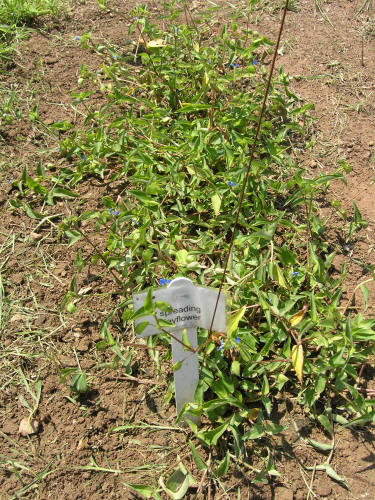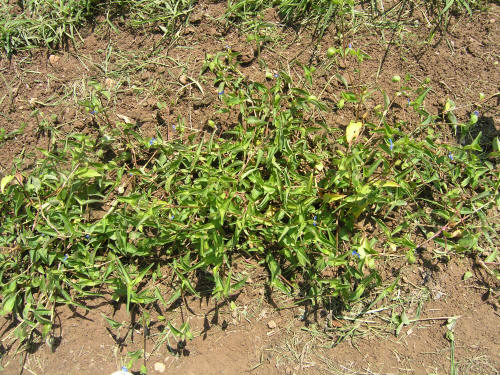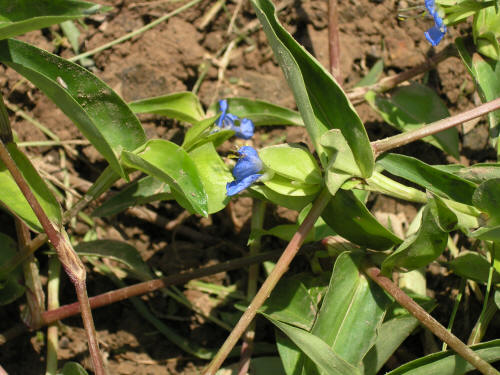Spreading Dayflower
Spreading Dayflower, Creeping Dayflower, Climbing Dayflower
Commelina diffusa Burm. f.
Commelinaceae (Spiderwort Family)

▲ ▼ plants in the "Weed Garden" at University of Arkansas, Fayetteville


▲ ▼ flowers and stems


▲ ▼ flower detail, showing lack of lower white petal

Dayflowers:
- trong>Several species present in Missouri, some are summer annuals, but some species are perennial here, with creeping roots and stems rooting at the nodes
- Are monocots in the Spiderwort (Commelinaceae) Family
- All have light-green to dark green, alternate, oval-pointed leaves with parallel veins (is a monocot) in the Spiderwort (Commelinaceae) Family
- All have small, blue flowers that have two deep blue upper petals (and sometimes one much-smaller white lower petal); flowers are in little boat-shaped spathes (sepal-like structures) in the axils of the leaves;
- Can reproduce by seed and vegetative means--cut stems can root readily in moist ground
- Prefers moist, fertile soil--gardens, cultivated fields--but also will grow on roadsides, non-crop areas
- Has a sprawling growth habit--long stems can create a tangled web in gardens, flower beds
- Is related to several houseplant species--wandering jew, inch plant--and the native perennial spiderwort
Spreading Dayflower, Creeping Dayflower:
- An annual weed, probably native to U.S., found in some crops or native areas
- Tends to sprawl along the ground, without too many upright stems
- This species has only the two upper blue petals, no lower white petal; both Asiatic dayflower and erect dayflowers have a third, lower, white petal
- The boat-shaped spathes are also open on both ends, but shaped more like a half-heart; erect dayflower spathe is closed at the end nearer the stem
- The leaf sheaths have fine hairs along their margins